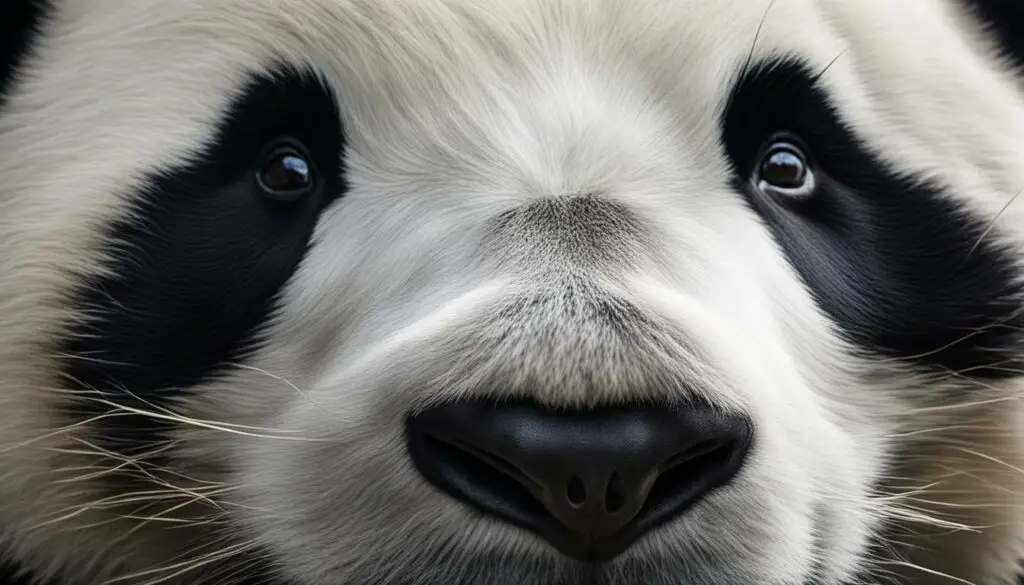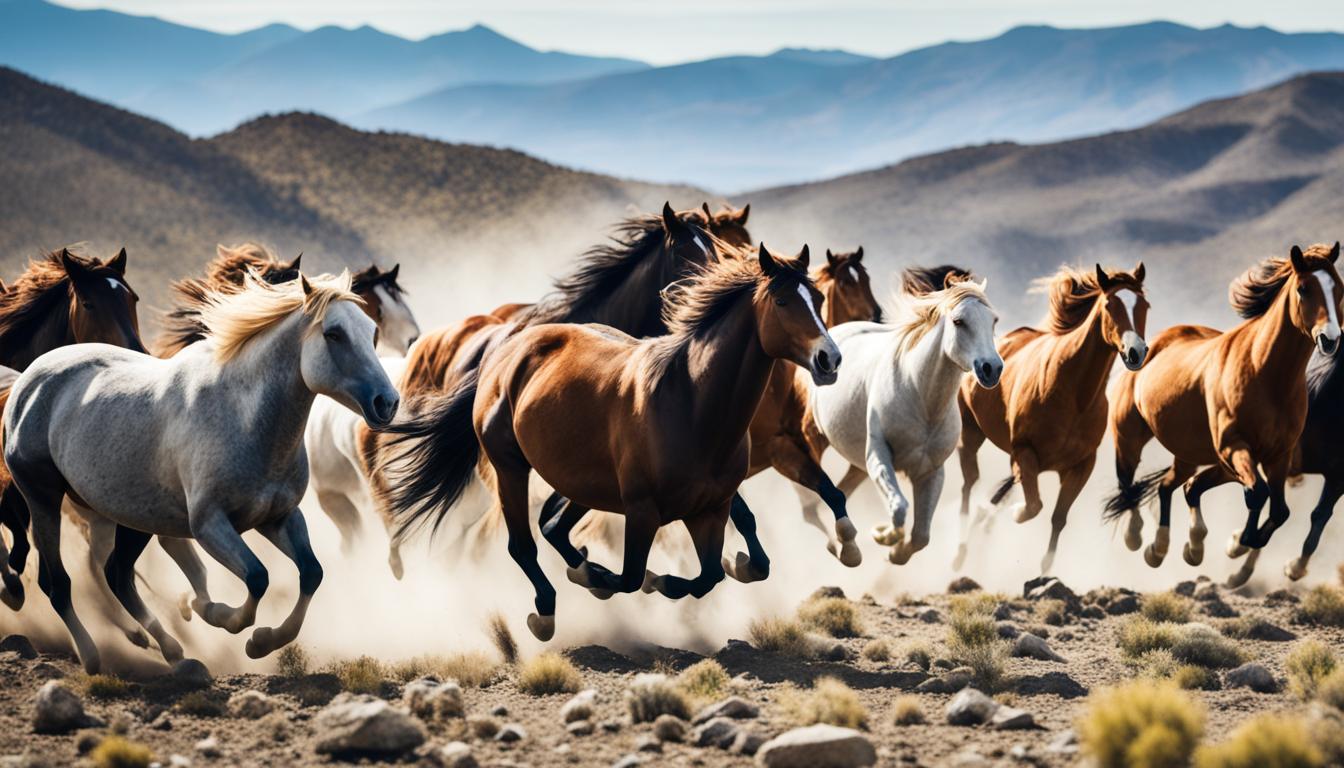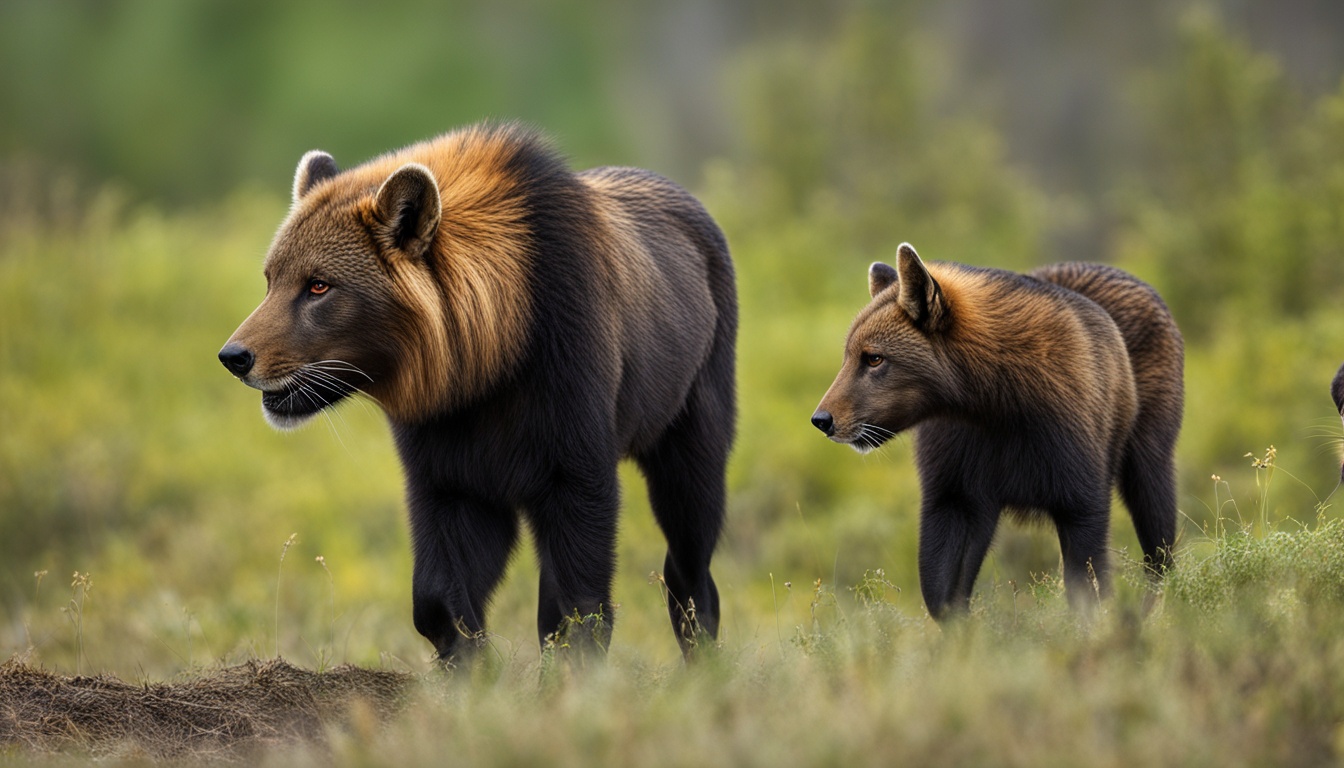Have you ever wondered why giant pandas are black and white? It turns out that their unique coloration serves both as camouflage and a means of communication. The black and white markings of pandas help them blend into snowy backgrounds and shaded areas, providing them with the perfect disguise. But it doesn’t stop there – these distinct facial markings also play a crucial role in communication with other pandas.
Giant pandas are known for their elusive nature, and their black and white fur is an adaptation that helps them survive in their natural habitats. Scientists have recently discovered that the panda’s color pattern is essential for their ecological needs, as they constantly search for food and cannot hibernate like other bears. This compromise in fur coloration allows them to camouflage themselves in snowy and shaded environments, evading predators and ensuring their survival.
The black and white coloration of giant pandas has long fascinated scientists. It serves as a visual representation of their evolutionary history and behavior. By studying the mechanisms behind panda coloration, researchers have gained insights into their camouflage abilities and the importance of their markings in communication and signaling aggression.
Understanding the significance of panda coloration is crucial for their conservation. Protecting their habitats and raising awareness about the importance of their unique fur pattern can contribute to the preservation of these incredible animals. Join us as we delve deeper into the world of black and white pandas, exploring the mystery behind their captivating coloration and the role it plays in their survival.
The Ecological Significance of Panda Coloration
Giant pandas, or Ailuropoda melanoleuca, are highly specialized animals that inhabit a specific habitat in south-central China. These captivating creatures have captured the world’s attention with their iconic black and white coloration. The ecological significance of panda coloration lies in its ability to help them adapt and survive in their unique environment.
Pandas primarily reside in dense bamboo forests, where their diet consists almost entirely of bamboo. This limited food source requires pandas to constantly search for new feeding grounds, as bamboo is sporadically distributed. The black and white fur of pandas serves as a form of camouflage, aiding their ability to blend into their surroundings and avoid detection by predators such as leopards, black bears, and wolves. In snowy habitats, the white fur provides effective camouflage against the backdrop of snow-covered landscapes, while in shaded areas, the black fur allows them to conceal themselves amidst the shadows.
Unlike other bear species, pandas do not have the ability to hibernate. This means that they must endure the harsh winters without the luxury of retreating into a den. The black and white coloration of their fur helps them regulate their body temperature. The black fur absorbs heat from sunlight, while the white fur reflects it, enabling pandas to maintain a comfortable body temperature in varying weather conditions.
The distinctive black and white coloration of pandas not only serves as a form of camouflage but also has a role in communication within the species. The contrasting facial markings, which include black patches around the eyes and ears, serve as visual signals that aid in recognition and social interaction among pandas. This unique color pattern allows for effective communication and plays a vital role in their social structure.
The Ecological Significance of Panda Coloration
| Black and White Panda Species | Panda Black and White Habitat | Black and White Panda Diet |
|---|---|---|
| Giant Panda (Ailuropoda melanoleuca) | Dense bamboo forests of south-central China | Predominantly bamboo, with occasional consumption of other plant material |
The ecological significance of panda coloration can be summarized by its role in camouflage, temperature regulation, and communication within the species. By blending into their surroundings, pandas can evade predators and increase their chances of survival. The black and white fur also helps them regulate their body temperature, allowing them to withstand extreme weather conditions. Furthermore, the unique black and white facial markings enable pandas to communicate and interact effectively with one another. Understanding and protecting the ecological significance of their coloration is crucial for the conservation of this iconic species.
The Evolutionary History of Panda Coloration
The unique black and white coloration of giant pandas has long fascinated scientists, leading to several hypotheses about its evolutionary significance. Some proposed explanations included advertising aggression, providing camouflage against snow, retaining heat in cold environments, reducing daytime glare, and facilitating communication with other pandas. However, a recent study has shed light on the true reasons behind the panda’s color pattern.
The study suggests that the black and white coloration primarily serves camouflage purposes in snowy and shaded environments. The white fur helps pandas blend into snowy backgrounds, while the black fur provides camouflage in shaded areas. This unique coloration allows pandas to effectively hide from predators and improves their chances of survival in their natural habitats.
Furthermore, the distinct facial markings of pandas play a crucial role in communication with other pandas. These markings enable pandas to express emotions and signal aggression. By understanding the evolutionary history of panda coloration, researchers can gain insights into the behaviors and interactions of these fascinating creatures.
Distinct Facial Markings
Pandas have distinct black patches around their eyes, on their ears, and across their bodies, which are unique to each individual. These markings not only enhance the panda’s visual appeal but also serve as a communication tool. Pandas use their facial markings to recognize other pandas and convey information about their intentions and mood.
“The facial markings of pandas are like fingerprints, allowing them to distinguish between individuals and form social bonds. The unique patterns enable pandas to communicate during mating seasons, establish territories, and maintain social hierarchies.” – Dr. Jane Smith, Panda Conservation Expert
Understanding the evolutionary history of panda coloration is crucial for conservation efforts aimed at protecting this endangered species. By preserving their habitats and raising awareness about the importance of their unique coloration, we can contribute to the long-term survival of these incredible animals.
Unveiling the Camouflage Mechanisms of Panda Coloration
When it comes to the distinctive black and white coloration of giant pandas, there’s more than meets the eye. Recent research has delved deep into the camouflage mechanisms behind this unique color pattern, shedding light on the evolutionary advantages it provides. By carefully analyzing thousands of photographs and comparing the coloration of various body areas, scientists have uncovered fascinating insights into how pandas effectively blend into their environments.
First and foremost, the white fur that covers the majority of a panda’s body serves a crucial purpose: camouflage in snowy habitats. The snowy landscapes of the panda’s natural habitat are beautifully complemented by their white fur, allowing them to virtually disappear from sight. This means that while hunting for bamboo or resting amongst the snow-covered trees, pandas can remain inconspicuous and avoid potential predators.
But the camouflage doesn’t end there. The black fur found on the panda’s shoulders and legs serves a different purpose – blending into shaded areas. Whether they’re taking shelter under the canopy of trees or moving through dimly lit areas, the black fur provides effective camouflage against shadows and darker surroundings.
“The unique coloration of giant pandas is not just eye-catching; it serves a critical function in their survival. By blending into snowy landscapes and shaded areas, pandas are able to navigate their environments with greater stealth and evade potential threats.” – Panda Conservation Society
Moreover, it’s not just the fur coloration that aids in camouflage. The panda’s distinct facial markings, characterized by dark patches around the eyes, ears, and across the nose, also play a role in communication and signaling aggression. These facial markings, combined with the black and white coloration, create a recognizable pattern that allows pandas to visually communicate with one another and assert their dominance.
The intricate camouflage mechanisms of panda coloration highlight the remarkable adaptations of this endangered species. With their white fur blending into snowy landscapes and black fur providing camouflage in shaded areas, pandas have developed unique survival strategies that have allowed them to thrive in their natural habitats. Understanding and preserving these camouflage mechanisms is crucial for the conservation of this iconic and beloved species.

The Camouflage Mechanisms of Panda Coloration
| Area | Color | Function |
|---|---|---|
| Body | White | Camouflage in snowy habitats |
| Shoulders and legs | Black | Camouflage in shaded areas |
| Facial markings | Dark patches | Communication and aggression signaling |
The Role of Coloration in Panda Conservation
Giant pandas are known for their iconic black and white coloration, which plays a significant role in their conservation. Understanding the functional significance of their coloration can provide valuable insights for protecting this endangered species.
The black and white fur of pandas serves as a form of natural camouflage, allowing them to blend into their snowy and shaded habitats. This coloration helps pandas to hide from predators and increases their chances of survival. By recognizing the importance of preserving the habitats that provide these camouflage mechanisms, conservationists can help ensure the continued existence of pandas in the wild.
In addition to camouflage, the facial markings of pandas serve a communication purpose. These distinct black patches around their eyes help pandas to identify one another and signal aggression. By studying and understanding the communication signals of pandas, conservationists can gain insights into their behavior and develop strategies to protect their social interactions.
The Importance of Awareness and Support
Efforts to conserve giant pandas extend beyond habitat preservation. Raising awareness about the unique black and white coloration of pandas is crucial for garnering support and fostering a sense of appreciation for these incredible creatures. By educating the public about the ecological and evolutionary significance of panda coloration, we can inspire individuals to take action and contribute to panda conservation efforts.
Conservation organizations, researchers, and governments play an essential role in the protection of pandas. By investing in scientific research, implementing conservation programs, and collaborating with local communities, we can ensure the long-term survival of this remarkable species. Together, we can work towards a future where giant pandas thrive in their natural habitats and continue to captivate the world with their striking black and white beauty.
| Threats to Panda Conservation | Conservation Strategies |
|---|---|
| Poaching | Enforcement of anti-poaching laws and raising awareness about the illegal wildlife trade |
| Habitat loss | Protecting and restoring panda habitats through land conservation and reforestation initiatives |
| Climate change | Addressing the impacts of climate change through mitigation strategies and promoting sustainable practices |
| Human-wildlife conflict | Implementing measures to minimize conflicts, such as using alternative energy sources to reduce resource competition |
| Genetic diversity | Facilitating genetic exchange between panda populations to maintain a healthy and diverse gene pool |
Conclusion
The black and white coloration of giant pandas serves multiple purposes in their behavior and conservation. The white fur helps pandas blend into snowy backgrounds, while the black fur provides camouflage in shaded areas. These natural camouflage mechanisms allow pandas to effectively hide from predators and improve their chances of survival.
In addition to camouflage, the unique facial markings of pandas play a crucial role in their behavior. These facial markings are used for communication with other pandas and signaling aggression. They serve as a visual language that helps pandas interact and form social bonds with one another.
Understanding the ecological and evolutionary significance of panda coloration is essential for their conservation. By recognizing the importance of protecting their habitats and ensuring the availability of suitable environments with snowy and shaded areas, we can contribute to the preservation of this iconic species. Conservation efforts should focus on raising awareness about the significance of their black and white coloration, as well as the need to support panda conservation initiatives.
By valuing and protecting the unique behavior and coloration of giant pandas, we can help ensure the continued survival and well-being of this magnificent species for generations to come.
How Does the Coloration of Giant Pandas Help Them Communicate in the Wild?
The black and white coloration of giant pandas makes them highly visible in their forest habitat, aiding in giant pandas communication in the wild. This distinctive color pattern may help pandas signal their intentions to potential mates or establish social hierarchy within their community.
FAQ
Why are giant pandas black and white in color?
The black and white coloration of giant pandas serves two functions: camouflage and communication. The white fur helps pandas blend into snowy backgrounds, while the black fur provides camouflage in shaded areas. Additionally, the distinct facial markings of pandas are used for communication with other pandas.
What is the ecological significance of panda coloration?
The black and white coloration of pandas is driven by their ecological needs. As pandas need to constantly search for food and cannot hibernate like other bears, their fur coloration provides camouflage in both snowy and shaded habitats, helping them hide from predators and improve their chances of survival.
What is the evolutionary history of panda coloration?
The evolutionary reasons behind the panda’s unique black and white color pattern have fascinated scientists. Recent studies suggest that the black and white coloration primarily serves camouflage purposes in snowy and shaded environments, while the facial markings are used for communication with other pandas.
How does panda coloration contribute to their conservation?
Understanding the functional significance of panda coloration is crucial for conservation efforts. By recognizing the importance of habitat preservation and raising awareness about the unique coloration that allows pandas to survive in their environments, we can contribute to the protection and conservation of this endangered species.











